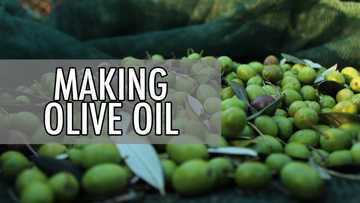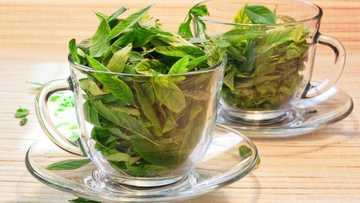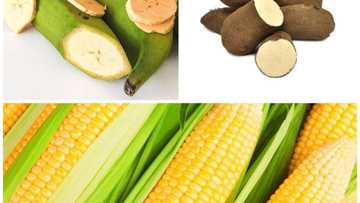How long does it take for plantains to grow? - From planting to harvesting
This information will be highly important for those who are planning to grow plantains. We will tell you all the features of the growing process. It's quite easy but interesting and profitable!

What is a plantain?
Musa paradisiaca or plantain is a large-leaved fruit tree, the fruits are similar looking as bananas, but unlike bananas, plantain fruit doesn’t ripen yellow but stays green. The plantain fruit isn’t eaten raw, but it is good to boil, fry or steam.
Plantain is very widespread plant throughout the tropics. Plantain and banana is an important source of carbohydrate on the African continent. This is a good source for a local farmer to get some revenue.
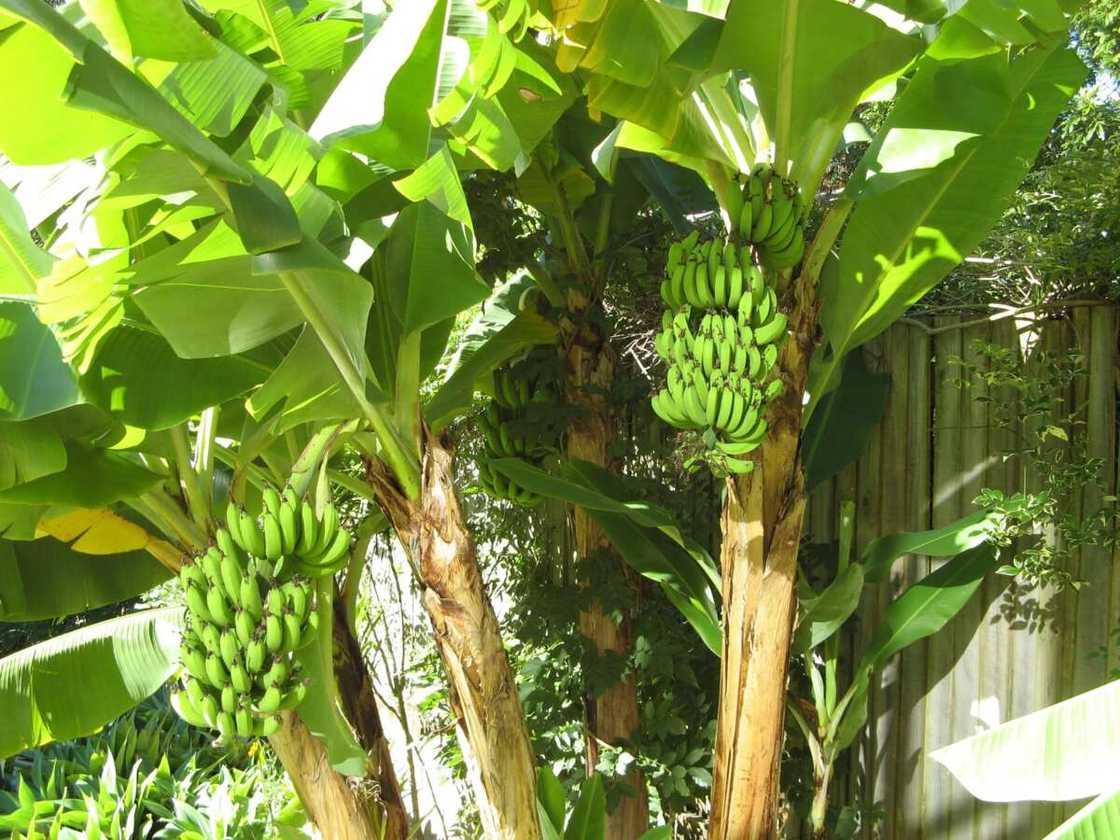
READ ALSO: Ostrich farming in Nigeria: How to start and succeed
Many farmers grow the plantain in the backyard. The price for this plant is growing so, farmers are interested in growing more plantains.
How to plant plantain?
1. Where do plantains grow?
First, we should choose the right place for the plant. The field should be easily accessible. The place should be well-drained, find the place that is free from any floods. One of the main requirements is that the soil must be rich in organic matter, especially in black soil.
2. Prepare the field
One should prepare the field with a minimum disturbance to the soil. Manual clearing is more preferred to mechanical. It is better to use mulch in the case of perennial cultivation. After cutting the trees do not remove the stumps, in this case, the trees can grow again.
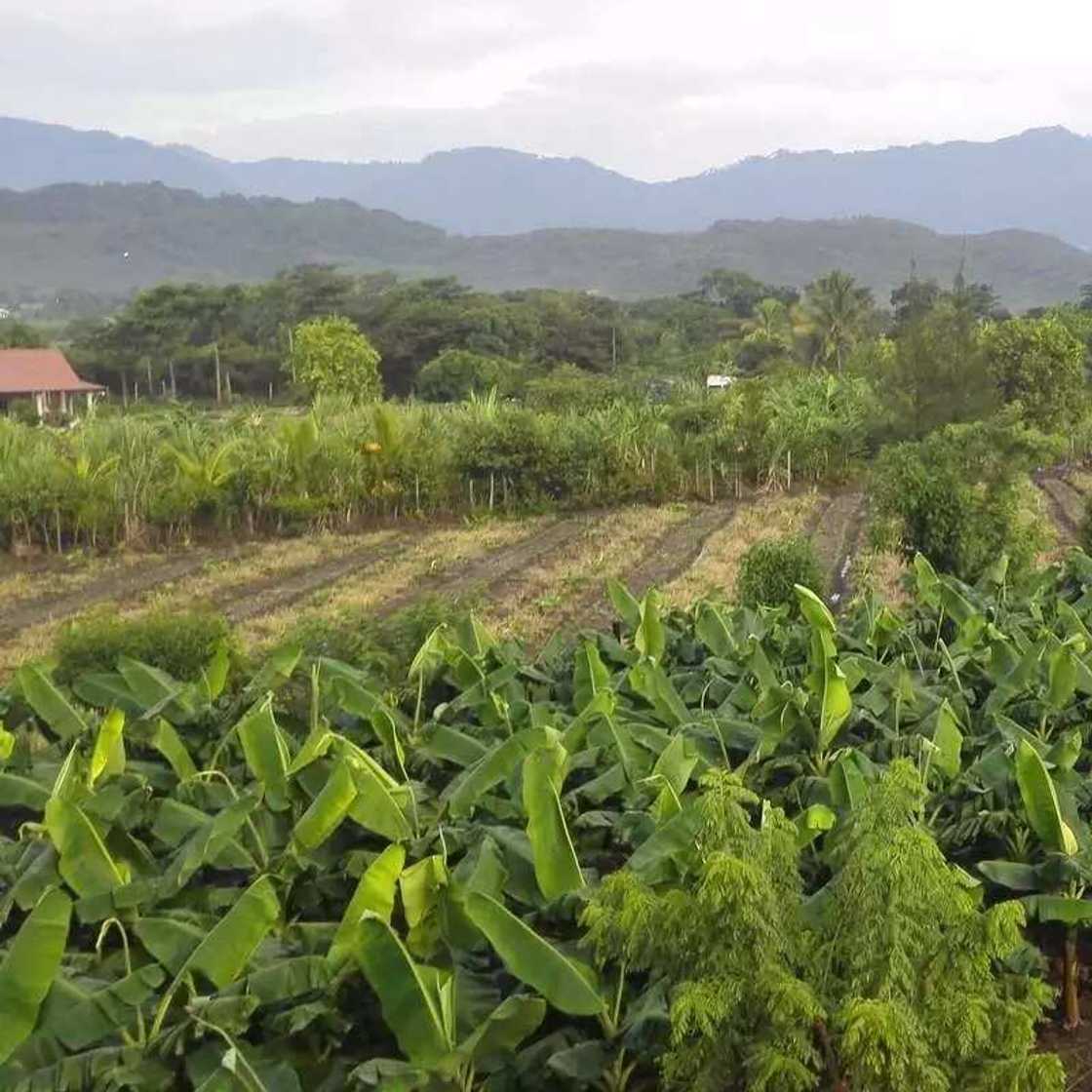
3. Spacing
The recommended distance between the plantain rows is 3 m or 2 m. It is also possible to leave 2.5 m of a spacing distance. In the case of 2.5 m spacing, 1 hectare should contain 1600 plants. The farmer should align the rows to give plants a needed amount of sunlight.
4. Selecting the cultivars
If you are planning the field cultivation, it is better to choose medium plantains. Giant plantains are more likely to be damaged. Horn plantains can’t give you a big amount of yield, the farmer can choose between French or a False Horn plantain.
5. Preparing the suckers
Suckers can be easily separated from their mother plant with a machete or spade. Be careful not to damage the sucker corm. The cutting of the pseudostem is to reduce bulkiness. A freshly peeled healthy corm is white, and unhealthy corms are usually with black spots.

It is better to destroy the sucker with infestation and brown or black spots. The preparation or peeling of sucker is carried out in the field where the planting material is collected. Prepared corms should be dried for a few days, but not under direct sunlight.
6. The process of planting
The sucker should be just placed in a special hole and the corm should be covered with soil. Plant the plant after all necessary field preparation. The holes should have about 30 cm x 30 cm size.
7. Choosing the best time to plant
It is better to plant the plantains in the time of rainy season. The plant should grow without stress and vigorously during the first 3 to 4 months after planting, so don’t plant it during the last months of the rainy season. Many farmers plant the plantain with the beginning of rains. But the best decision is to plant the plantain in the middle of the rainy season.
8. The mulching process
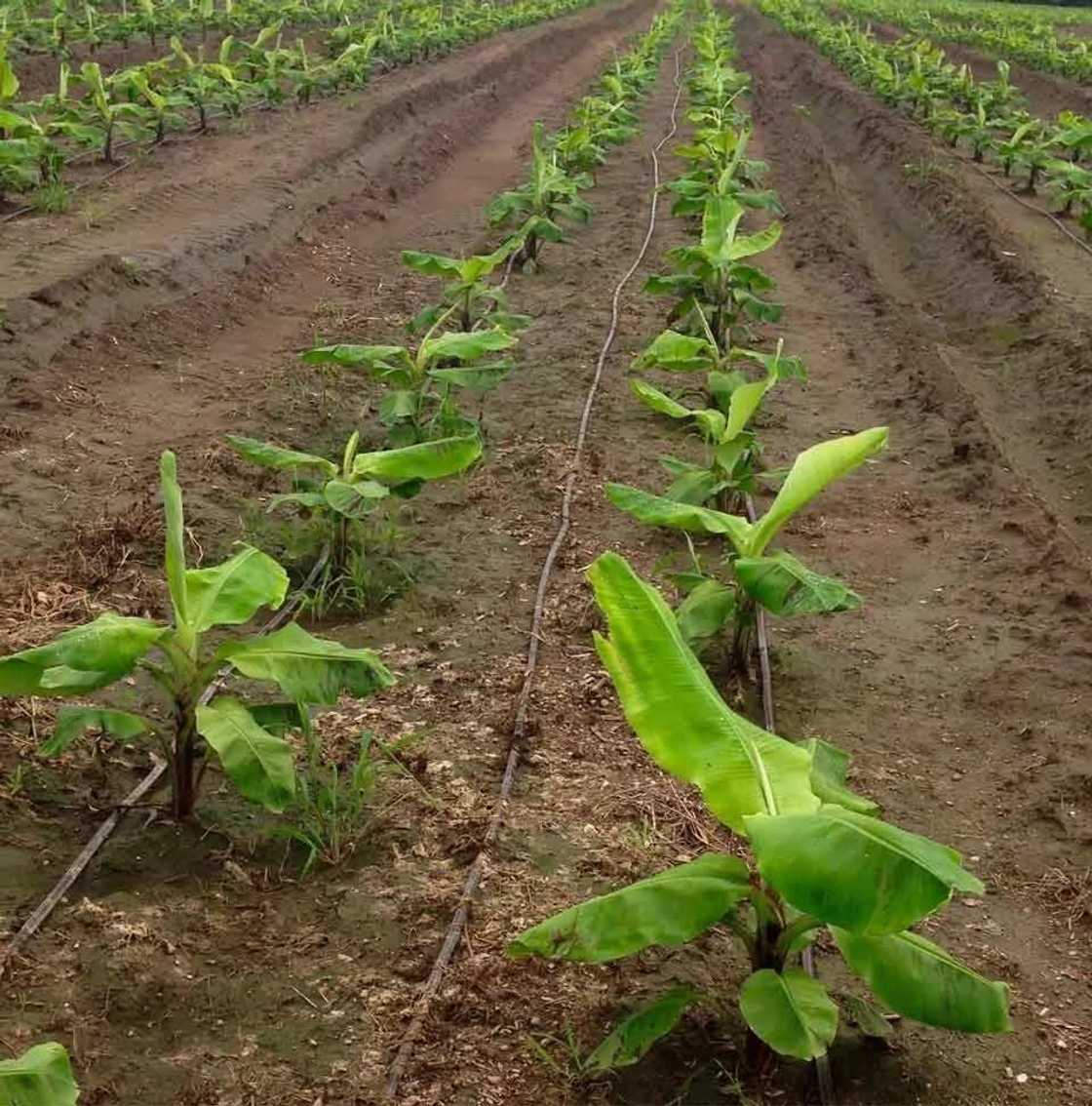
Organic matter is highly important for plantain cultivation essentially if the field was in use for a long time. Organic matters stimulate root development, decrease soil temperature, improve soil drainage, and increase soil porosity.
The field esquires mulch from plants and/or manure from animals. The mulch should cover the soil completely.
9. Fertilizing
Do not forget that to get a good and stable harvest you need to fertilize the soil regularly. You can use organic fertilizers or inorganic fertilizers. With the usage of inorganic fertilizers, the farmer can easily handle the concentrated nutrients.
Organic fertilizers are good to improve the soil moisture retention and biological activity, they prevent weed and erosion. The best time for application of fertilizer is 1 month after planting.
10. Controlling the weeds

Plantains must be protected from weeds. Weed control starts on the stage of field preparation. The farmer should control the weed treading every 6 or 8 weeks. The herbs or grasses are the most pernicious because they need the same nutriment as plantains. Weeds can be controlled by chemical means, through mulching or manually. Mulching is considered as the most efficient means.
11. Intercropping
The space between plants can be used for other plants, with a short life cycle, for example, yam, groundnut, and maize. Plantains give a good shade for young coffee and cocoa plants.
12. Propping
Plantain plants are always needed some support from 1 or 2 wooden props, usually made of bamboo. This will help to save the plant from fractures and ensure normal growth.
13. Harvesting time

The farmer needs between 8 to 9 months for all precautions and care to get the first harvest. The new bunch ripens within a week. Be careful not to drop the bunch when the main plant is cut.
Now you know how to grow plantains, the process is not so simple but it gives a good result. The cultivation of plantain can become a profitable business, it does not necessarily to start with a large field, you can plant your first plantain even in the backyard.
READ ALSO: How to start plantain farming in Nigeria
Source: Legit.ng



